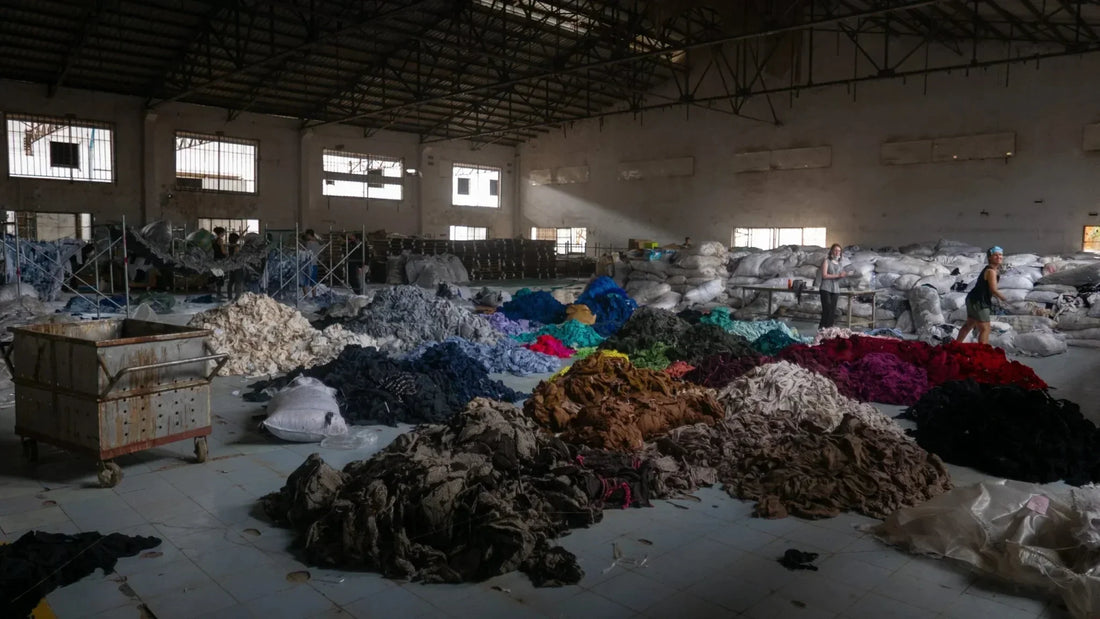
The Textile Industry and Its Environmental Problems
BY NAMUBAKShare
The textile industry is one of the most polluting and the most notable for its relationship with labor exploitation, being the second most polluting industry.
This involves a long and complex chain of production and consumption of supplies. ranging from raw material extraction, textile manufacturing, dyeing to garment construction.
Normally, when we think about pollution We never imagined that the clothes we wear every day are part of this problem.
However, the overall impact this industry has on our planet is of great concern and a problem that needs to be addressed urgently, as thousands of toxic chemicals are used, It requires a high consumption of water and energy, generates large amounts of waste and spills, and many factories keep employees in miserable conditions.

“Unsustainable mass consumerism induced by fast fashion is another problem that must be addressed.”
The current concept of fashion is known as “fast fashion” in the Textile Industry , it consists of mass production and consumption of clothing in a short period of time.
All this boils down to low-quality clothing , with synthetic materials and a low average lifespan.
Large amounts of fossil energy and virgin raw materials are extracted to produce garments that are often worn for only a short time short time , and then the materials are mainly sent to landfills or incinerated.
Please note: the textile industry uses the 97% of its raw materials come from virgin sources and only 2% from recycled sources And of the 53 million tons of fiber produced for the industry, 12% was wasted during garment production.
The textile fibers used in fashion are mainly cotton, polyester and nylon . These fibers can be natural (cotton) or synthetic (polyester and nylon), but their mass production for garment manufacturing generates various environmental impacts .
He cotton It is the third type of crop that requires the greater amount of water.
To give you an idea, producing a kilogram of cotton requires between 5,000 and 10,000 liters of water , depending on the technique.
It also consumes the 10% of all agricultural chemicals and 25% of insecticides.
Did You Know?
One of the biggest disasters resulting from cotton cultivation was the drying of the Aral Sea , located between Kazakhstan and Uzbekistan. 
This disaster was caused by the diversion of the channels of the two main rivers that flowed into this “inland sea” to supply the large irrigated crops in the area.
Synthetic Fibers
On the other hand, synthetic fibers like polyester and nylon are produced using chemical compounds , derived mainly from petroleum.
The impact generated by these fibers is enormous, since they are petroleum derivatives, They emit a large amount of greenhouse gases in their production.
Furthermore, they are non-biodegradable compounds, and washing these garments causes them to shed their fibers, generating microplastics that end up reaching the sea.
Slow fashion is a healthy alternative to conventional fashion
Sustainable fashion is linked to the concept of fair trade. By promoting a new approach to the textile industry based on the Respect for the environment and the well-being of societies , in turn, generates a new form of moderate, fair and well-paid consumption and a generator of quality products.
This movement defends the sustainable fashion concept, based on clothing with a low environmental impact. To do this, they use natural organic fibers such as cotton, hemp, linen, bamboo, silk, or even recycled fibers.
More and more citizens are becoming aware of the need to acquire habits that, multiplied by sustainable networks, have a direct positive impact on the stability of the planet .
That's why we must make more responsible purchases, It is advisable to know where the product we are going to buy comes from and how it is produced, and, as far as possible, avoid unnecessary purchases.

